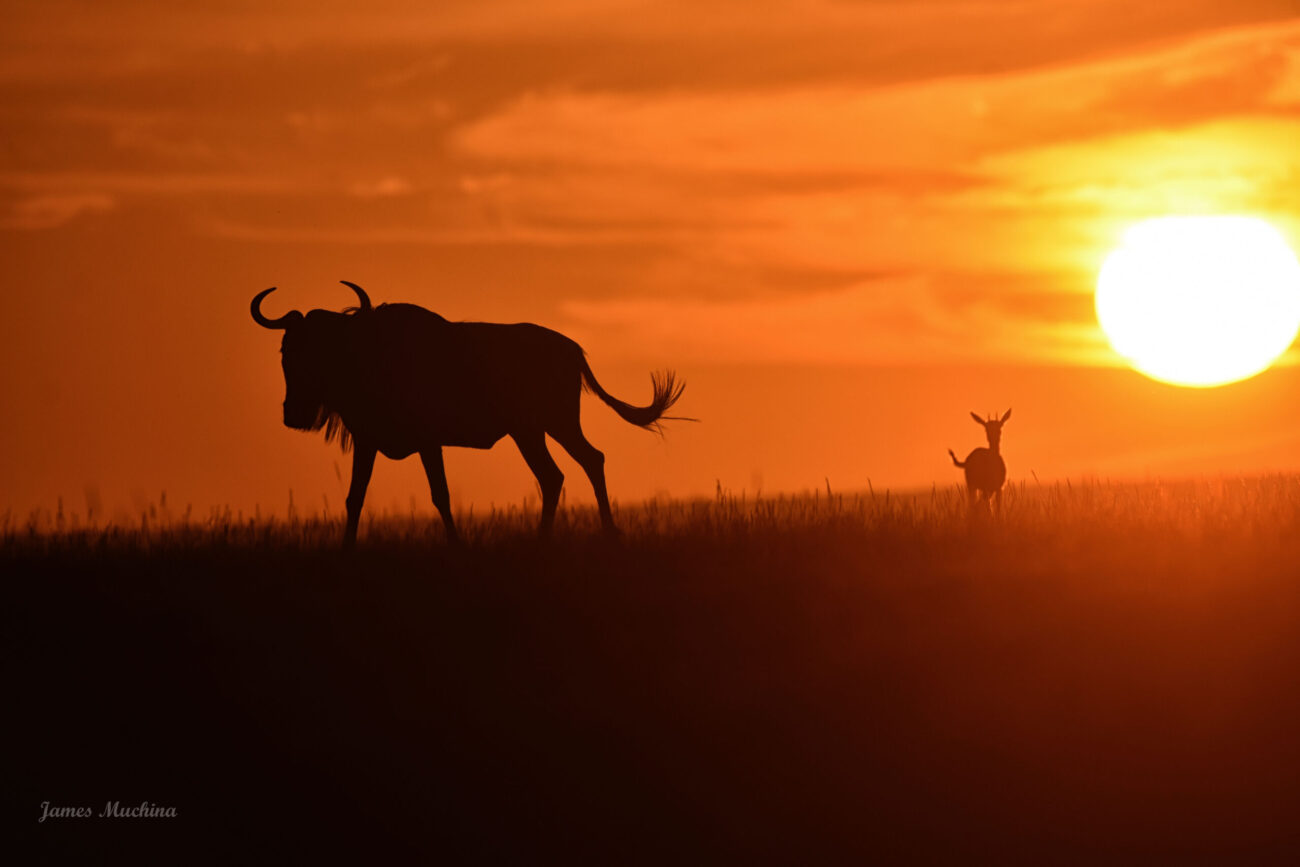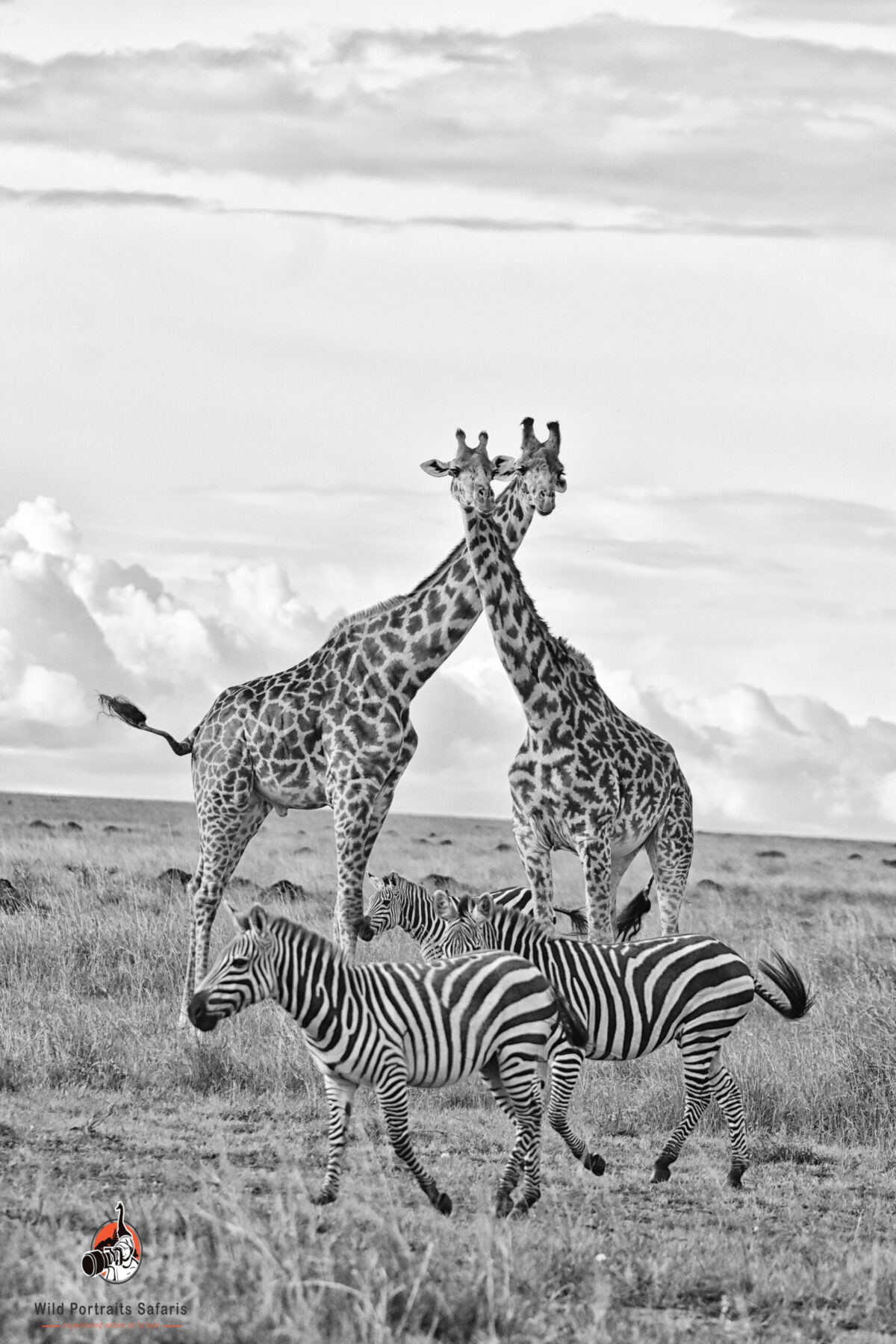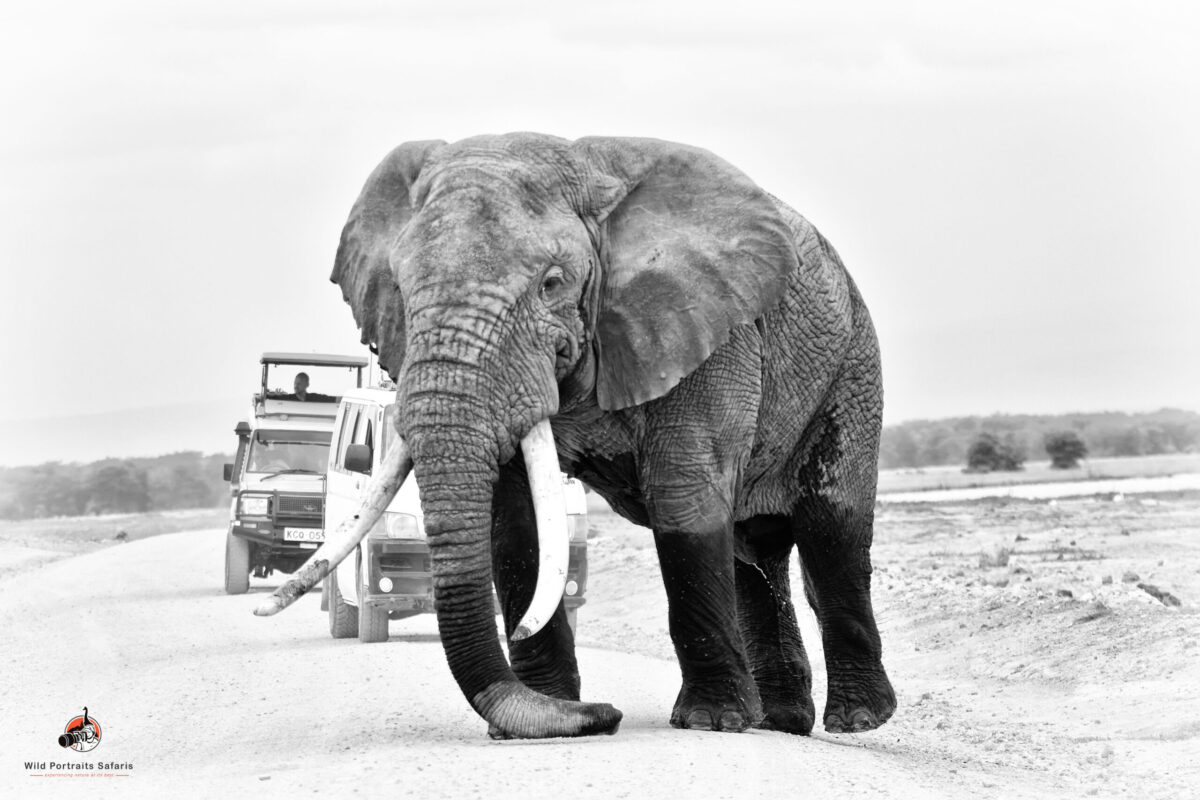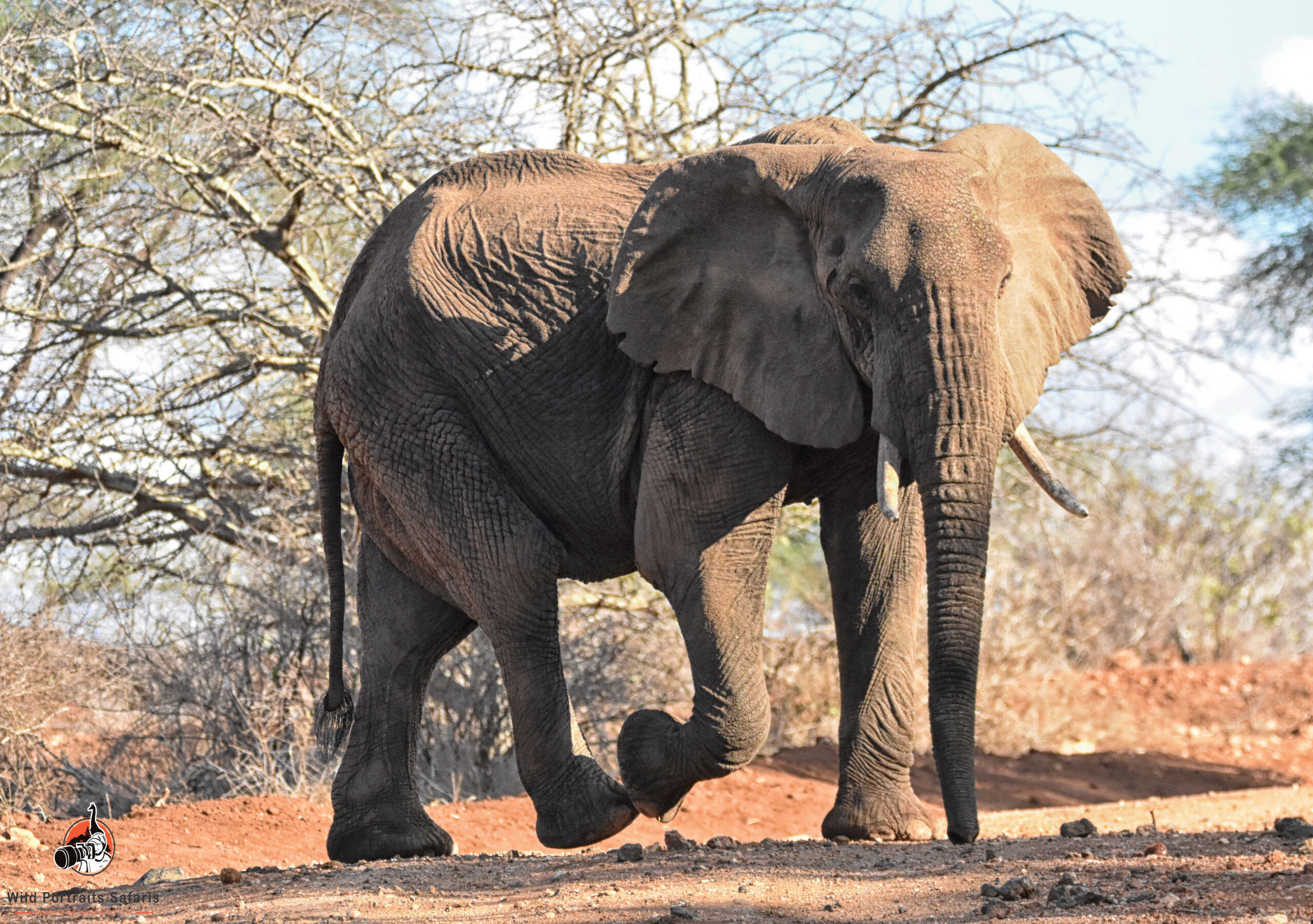“The Magnificent Saga of the Great Wildebeest Migration Serengeti: A Journey Through Time and Environmental Resilience”
In the heart of the Serengeti Masai Mara ecosystem, the awe-inspiring migration of wildlife unfolds, a spectacle driven by the primal need for pasture and water, guided by the ebb and flow of seasonal climate changes. Among Earth’s most famous and spectacular mammal migrations, the great wildebeest migration Serengeti takes center stage.
The history of the great wildebeest migration serengeti
Rewinding the clock to the early 20th Century, the vast savannah between the Ngorongoro Highlands and Lake Victoria, known as the Serengeti, was dominated by lions, the keystone species of the region. Human presence was sparse, limited by the challenges posed by tsetse flies in the woodlands. The few inhabitants, such as the Hadzabe and Ndorobo, were hunter-gatherers. The Masai were absent from the plains, deterred by the harsh conditions for domestic livestock.
The decline of Lions in the Serengeti
However, in the 1920s, a significant decline in lion numbers occurred due to hunting in central Serengeti. This prompted Finch Hanton and Julian Huxley to advocate for the area’s reservation in 1930, aiming to safeguard the remaining lion population.
The Rinderpest Pandemic
The late 19th-century rinderpest pandemic exacerbated by the disease’s devastating impact on cattle led to economic and social upheaval in East Africa. Not only did it kill the domestic animals but wildlife like buffalos and wildebest were lost in big numbers. After its eradication, the wildebeest population gradually rebounded, stabilizing around 1.4 million by the 1970s giving birth to the great wildebeest migration Serengeti
The great wildebeest migration Serengeti as we know it today
The modern iteration of the great migration began in the 1960s, spurred by a surge in wildebeest numbers. Recognizing its significance, Dr. Phillip Imler declared the great wildebeest migration Serengeti the number one wonder of Africa in 2013.
This massive circular the great wildebeest migration Serengeti involves not only gnus but zebras, and other antelopes, predominantly occurring in Tanzania, with a portion extending into Kenya. The spectacle, occurring from late June to mid-November, sees the migration crossing the Mara River into Kenya’s Maasai Mara Nature Reserve.
Every year, over a million wildebeest and zebras embark on an epic loop through the Serengeti and Masai Mara, following the rains and the lush grasslands. The sheer numbers are a breathtaking sight, resembling a sea of animals stretching as far as the eye can see. Driving among the herds for hours is not uncommon, especially in more open areas.
Where to see the great wildebeest migration
Predicting the precise locations and timings of the great wildebeest migration is a nuanced and intricate task, characterized by the inherent unpredictability of nature. Nevertheless, there exist overarching guidelines that offer insights into the migration’s general patterns throughout the year.
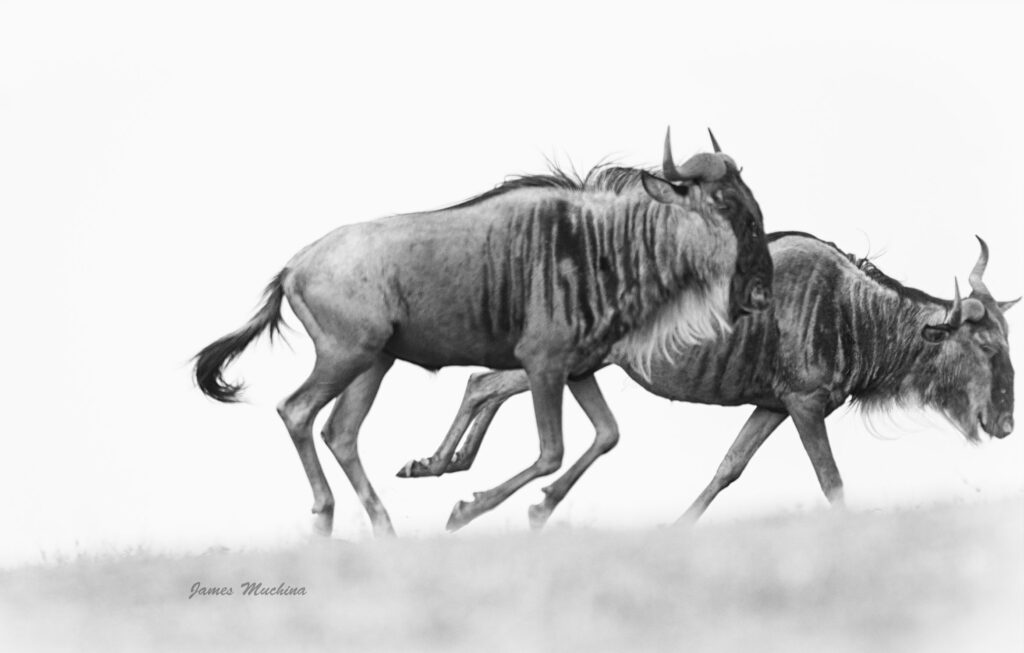
The great wildebeest Calving Seaon
As January to March season unfolds, the expansive southern and southwestern regions of the Serengeti, coupled with the western side of the Ngorongoro Conservation Area, witness the wildebeest and zebra populations widely dispersed. This period coincides with a remarkable phenomenon – the mass calving of wildebeest. Hundreds of thousands of newborns take their first precarious steps within afew minutes of their birth, closely following their mothers. About 8000 calves are born daily.
Yet another intriguing aspect of Wildebeests is observed during the calving season, where a substantial majority of females deliver their offspring before noon. This strategic timing affords the newborns ample daylight hours to master the art of walking and establish crucial bonds with their mothers. This schedule is particularly advantageous as it allows the vulnerable young ones to navigate their initial steps in the safety of daylight before the heightened activity of most predators, which typically occurs in the late afternoon and evening.
The March April Season
As the calendar progresses into March and April, the herds remain stationed in the southern reaches during the rainy season. It is during this timeframe that the wildebeest and zebras amass into formidable, thousand-strong herds, initiating their northwest migration in search of nourishment.
Crossing the Gurumeti River
With the onset of May, the migration narrative shifts as herds traverse northwest towards the Western Corridor. The crossing of the Grumeti River unfolds between late May and early July, marking a pivotal juncture in their journey, a spectacle lasting approximately a week.
The Intricate Dance of Wildebeest Mating: A Symphony Connected to Nature’s Rhythms”
Embarking on the mesmerizing journey into the wild world of wildebeest mating reveals a fascinating dance intricately connected to the celestial rhythms of the full moon. Known as the rut, the beginning of the mating season unfolds, unveiling a complex interplay of behaviors that shape the future generations of these remarkable creatures.
Territorial males, vigilant and ever-ready for mating, play a crucial role in the mating season dynamics. Within the larger herds, breeding clusters of approximately 150 wildebeests emerge. Amidst these gatherings, five or six dominant bulls take charge, creating and fiercely guarding territories for the ambling cows. A choreography of bucking and cantering unfolds as these bulls make a dramatic display, marking their territories through a ritual of urination, defecation, and the strategic spreading of secretions from interdigital and preorbital glands. This potent mixture is dispersed when the bulls paw at the ground and rub it with their heads, creating a unique olfactory signature for their territories.
Encounters between wildebeests during this time are marked by a distinctive rocking canter, signaling acknowledgment between individuals. When greeting a cow, a bull may attempt to mount or herd her. If the cow is receptive, mating occurs at a rapid pace, with bulls mating about two times per minute. For a mobile cow herd, encounters with several dozen bulls a day are not uncommon, and a receptive cow will constantly have a vigilant bull by her side.
As the mating season unfolds, the wildebeest community becomes a hive of activity, with heightened levels of herding, fighting, and frequent vocalizations. Aroused bulls, driven by the thrill of excitement, strive to herd as many cows as possible. Their dedication is such that they forsake sleep and food if a female is in close proximity.
Female wildebeests typically attain sexual maturity at 16 months, although mating often doesn’t commence until around 28 months. The females exhibit high fertility, conceiving at a remarkable rate. This heightened fertility is strategically aligned with the end of the rainy season, ensuring a favorable climate for the offspring’s development. The gestation period spans 8 to 8.5 months, and uniquely, wildebeests calve within a concentrated timeframe, occurring during the month preceding or at the onset of the peak rainy season.
The intricate ballet of wildebeest mating is not merely a biological imperative but a symphony choreographed by nature, where celestial cues, territorial prowess, and the untamed spirit of the wild converge to shape the survival and continuity of this extraordinary species.
The great wildebeest Migration in the Masai Mara
As the second half of July dawns, the herds embark on a northward trajectory, venturing into the northern Serengeti and Kenya’s Maasai Mara. This northwards push culminates in the awe-inspiring crossing of the Mara River, a feat that unfolds with incredible prowess. In certain years, the migration spills into Kenya’s Masai Mara as early as June.
September to October witnesses the departure of the last stragglers from the Serengeti, with a significant portion opting to remain in the Masai Mara throughout October. Come November, the herds initiate their southward journey in anticipation of impending rains, crossing through the eastern Serengeti and eventually heading south in December.
While these guidelines offer a broad framework, exceptions are commonplace. Unforeseen events, such as unseasonal rains or climatic anomalies, can influence the migration’s course. Despite the inherent unpredictability, adhering to these general timelines increases the likelihood of encountering this mesmerizing natural phenomenon during your expedition.
Beyond its status as a breathtaking natural spectacle, the Wildebeest Migration serves a vital function in preserving a robust ecosystem. The cyclic movement of these majestic creatures is instrumental in securing ample nourishment, a crucial factor in their survival. This cyclic migration strategy effectively prevents overgrazing, contributing to the maintenance of a balanced and healthy Wildebeest population.
This harmonious relationship extends to the broader ecosystem, as the thriving Wildebeest population ensures an abundant source of food for predators. The cyclic interplay between predators and prey establishes a sustainable predator-prey balance, a cornerstone for the ecological well-being of the region.
Wildebeest are a key stone species
Furthermore, the droppings from these grazers play a pivotal role in nourishing the soil. As the Wildebeests traverse the landscape, their droppings become a natural fertilizer, fostering the growth of new grasses and plants. This cyclical process not only benefits the Wildebeests but also provides sustenance for all other herbivores inhabiting the wild. In essence, the Wildebeest Migration is not merely a visual spectacle; it is a dynamic force shaping the intricate balance of life within the ecosystem.
The Zebra wildebeest co existence
In the vast expanse of the African plains, a harmonious coexistence unfolds between zebras and wildebeests as they traverse the landscape in tandem. This symbiotic relationship, rooted in mutual benefit, showcases the unique qualities of each species that enhance the herds’ chances of survival in the wilderness.
While both zebras and wildebeests are herbivores, their ability to peacefully share the same environment stems from their distinct dietary preferences. Grazing on the same vegetation, they avoid competition by targeting different parts of plants. Zebras exhibit a penchant for longer and tougher grass, leaving behind the shorter grass for their wildebeest companions. This nuanced division of foraging territory ensures an equilibrium in resource utilization, fostering a cooperative cohabitation.
Beyond their dietary habits, the two species bring complementary survival skills to the collective herd. Zebras, with their exceptional vision, serve as sentinels for the group. Their keen eyesight allows them to detect predators from afar, enabling the entire herd to avoid potential threats proactively. This strategic advantage not only safeguards the zebras but also contributes to the overall safety of the mixed herd.
Conversely, wildebeests contribute to the alliance with their acute sense of smell. This olfactory prowess becomes particularly valuable when searching for water sources in the arid landscapes they traverse. The wildebeests’ ability to detect water through scent aids the entire group in navigating their migratory routes more effectively, ensuring a vital resource for survival.
In essence, the coexistence of zebras and wildebeests goes beyond mere proximity; it exemplifies a delicate balance forged through mutually beneficial behaviors and unique attributes. This symbiotic relationship not only enhances the chances of individual survival but also underscores the intricate interdependence that characterizes life on the African plains.

